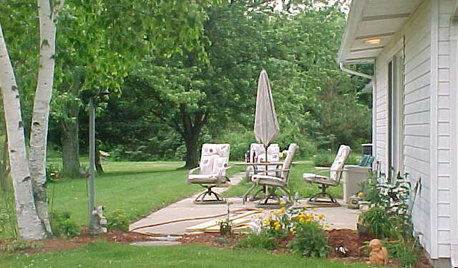3 insulation questions, help needed(long)
jamesbodell
18 years ago
Related Stories

GREEN DECORATING8 Questions to Help You See Through Green Hype
With the ecofriendly bandwagon picking up some dubious passengers, here's how to tell truly green products and services from the imposters
Full Story
ORGANIZING4 Questions to Help You Organize Your Favorite Photos
Organize your keeper photos with a system that's just right for you, whether it's in the cloud or you can hold it in your hand
Full Story
KITCHEN DESIGNDesign Dilemma: My Kitchen Needs Help!
See how you can update a kitchen with new countertops, light fixtures, paint and hardware
Full Story
CURB APPEAL7 Questions to Help You Pick the Right Front-Yard Fence
Get over the hurdle of choosing a fence design by considering your needs, your home’s architecture and more
Full Story
GREEN BUILDINGConsidering Concrete Floors? 3 Green-Minded Questions to Ask
Learn what’s in your concrete and about sustainability to make a healthy choice for your home and the earth
Full Story
HOUSEKEEPINGWhen You Need Real Housekeeping Help
Which is scarier, Lifetime's 'Devious Maids' show or that area behind the toilet? If the toilet wins, you'll need these tips
Full Story
LIFEDecluttering — How to Get the Help You Need
Don't worry if you can't shed stuff and organize alone; help is at your disposal
Full Story
ORGANIZINGGet the Organizing Help You Need (Finally!)
Imagine having your closet whipped into shape by someone else. That’s the power of working with a pro
Full Story

WINDOW TREATMENTSEasy Green: 9 Low-Cost Ways to Insulate Windows and Doors
Block drafts to boost both warmth and energy savings with these inexpensive but effective insulating strategies
Full StoryMore Discussions










housekeeping
jamesbodellOriginal Author
Related Professionals
Lebanon Home Remodeling · Greensboro Kitchen & Bathroom Designers · Cloverly Kitchen & Bathroom Remodelers · Fort Myers Kitchen & Bathroom Remodelers · Jefferson Hills Kitchen & Bathroom Remodelers · Las Vegas Kitchen & Bathroom Remodelers · Morgan Hill Kitchen & Bathroom Remodelers · New Port Richey East Kitchen & Bathroom Remodelers · Newberg Kitchen & Bathroom Remodelers · Pico Rivera Kitchen & Bathroom Remodelers · Thonotosassa Kitchen & Bathroom Remodelers · Vienna Kitchen & Bathroom Remodelers · Auburn Hills Architects & Building Designers · Baltimore Architects & Building Designers · Bell Gardens Architects & Building DesignersjamesbodellOriginal Author
jamesbodellOriginal Author
sharon_sd
jamesbodellOriginal Author
housekeeping
jamesbodellOriginal Author
housekeeping
housekeeping
jamesbodellOriginal Author
ericbainbridge